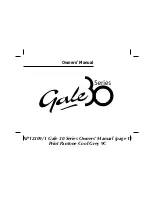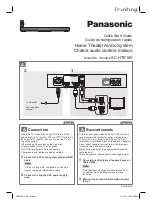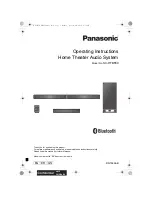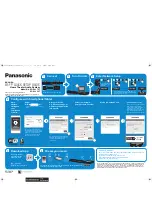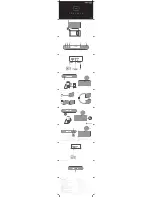
SPECIFICATIONS
Cat. No. ..................................................... 2891-20
Volts......................................................... 12/18 DC
Amps ..................................................................2.6
Battery Type .............................. M12™ and M18™
Charger Type............................. M12™ and M18™
USB Output Volts............................................ 5 DC
Max USB Output Amps.......................................2.1
Recommended Ambient
Operating Temperature ......................0°F to 125°F
FUNCTIONAL DESCRIPTION
1
2
3
4
5
6
7
8
9
1.
Low battery indicator
2. Power button
3. Bluetooth indicator button
4.
Aux indicator button
5. Volume down
6. Volume up
7. AC/DC power supply jack
8. AUX jack
9. USB power outlet
EXTENSION CORDS
Grounded tools require a three wire extension
cord. Double insulated tools can use either a two
or three wire extension cord. As the distance from
the supply outlet increases, you must use a heavier
gauge extension cord. Using extension cords with
inadequately sized wire causes a serious drop in
voltage, resulting in loss of power and possible tool
damage. Refer to the table shown to determine the
required minimum wire size.
The smaller the gauge number of the wire, the greater
the capacity of the cord. For example, a 14 gauge
cord can carry a higher current than a 16 gauge cord.
When using more than one extension cord to make
up the total length, be sure each cord contains at
least the minimum wire size required. If you are using
one extension cord for more than one tool, add the
nameplate amperes and use the sum to determine
the required minimum wire size.
Guidelines for Using Extension Cords
• If you are using an extension cord outdoors, be sure
it is marked with the suffix “W-A” (“W” in Canada)
to indicate that it is acceptable for outdoor use.
• Be sure your extension cord is properly wired
and in good electrical condition. Always replace a
damaged extension cord or have it repaired by a
qualified person before using it.
• Protect your extension cords from sharp objects,
excessive heat and damp or wet areas.
Recommended Minimum Wire Gauge
For Extension Cords*
Nameplate Amps
Extension Cord Length
25'
50'
75'
100'
150'
0 - 2.0
2.1 - 3.4
3.5 - 5.0
5.1 - 7.0
7.1 - 12.0
12.1 - 16.0
16.1 - 20.0
18
18
18
18
16
14
12
18
18
18
16
14
12
10
18
18
16
14
12
10
--
18
16
14
12
10
--
--
16
14
12
12
--
--
--
* Based on limiting the line voltage drop to five volts at 150%
of the rated amperes.
GROUNDING
WARNING
Improperly connecting the ground-
ing wire can result in the risk of
electric shock. Check with a qualified electrician
if you are in doubt as to whether the outlet is
properly grounded. Do not modify the plug pro-
vided with the tool. Never remove the grounding
prong from the plug. Do not use the tool if the
cord or plug is damaged. If damaged, have it
repaired by a MILWAUKEE service facility before
use. If the plug will not fit the outlet, have a
proper outlet installed by a qualified electrician.
Grounded Tools (Three-Prong Plugs)
Tools marked “Grounding Required” have a three
wire cord and three prong grounding plug. The plug
must be connected to a properly grounded outlet
(See Figure A). If the tool should electrically mal
-
function or break down, grounding provides a low
resistance path to carry electricity away from the
user, reducing the risk of electric shock.
The grounding prong in the plug is connected through
the green wire inside the cord to the grounding
system in the tool. The green wire in the cord must
be the only wire connected to the tool's grounding
system and must never be attached to an electrically
“live” terminal.
Your tool must be plugged into an appro-
Fig. A
priate outlet, properly installed and
grounded in accordance with all codes
and ordinances. The plug and outlet
should look like those in Figure A.
Double Insulated Tools (Two-Prong Plugs)
Tools marked “Double Insulated” do not require
grounding. They have a special double insulation
system which satisfies OSHA requirements and
complies with the applicable standards
Fig. B Fig. C
of Underwriters Laboratories, Inc., the
Canadian Standard Association and
the National Electrical Code. Double
Insulated tools may be used in either
of the 120 volt outlets shown in Figures
B and C.
•
Once the device has successfully paired with the
speaker, use the controls on the Bluetooth capable
device to move through tracks and control volume.
Volume
Use the and buttons to decrease or increase
the volume.
MAINTENANCE
WARNING
To reduce the risk of injury, always
unplug the charger and remove the
battery pack from the charger or tool before
performing any maintenance. Never disassemble
the tool, battery pack or charger. Contact a
MILWAUKEE service facility for ALL repairs.
Maintaining Tool
Keep your tool, battery pack and charger in good
repair by adopting a regular maintenance program.
Inspect your tool for issues such as undue noise,
misalignment or binding of moving parts, breakage of
parts, or any other condition that may affect the tool
operation. Return the tool, battery pack, and charger
to a MILWAUKEE service facility for repair. After six
months to one year, depending on use, return the
tool, battery pack and charger to a MILWAUKEE
service facility for inspection.
If the tool does not start or operate at full power with
a fully charged battery pack, clean the contacts on
the battery pack. If the tool still does not work prop
-
erly, return the tool, charger and battery pack, to a
MILWAUKEE service facility for repairs.
WARNING
To reduce the risk of personal in-
jury and damage, never immerse
your tool, battery pack or charger in liquid or
allow a liquid to flow inside them.
Cleaning
Clean dust and debris from vents. Keep handles
clean, dry and free of oil or grease. Use only mild
soap and a damp cloth to clean, since certain clean
-
ing agents and solvents are harmful to plastics and
other insulated parts. Some of these include gasoline,
turpentine, lacquer thinner, paint thinner, chlorinated
cleaning solvents, ammonia and household deter-
gents containing ammonia. Never use flammable or
combustible solvents around tools.
ASSEMBLY
WARNING
Recharge only with the charger
specified for the battery. For spe
-
cific charging instructions, read the operator’s
manual supplied with your charger and battery.
Removing/Inserting the Battery
To
remove
the battery, push in the release buttons
and pull the battery pack away from the tool.
WARNING
Always remove battery pack before
changing or removing accessories.
To
insert
the battery, slide the pack into the body
of the tool. Make sure it latches securely into place.
WARNING
Only use accessories specifically
recommended for this tool. Others
may be hazardous.
Low Battery Indicator
To protect the life of the battery pack, the low battery
indicator will flash red when the battery's charge is
low, but still operable. The indicator will light solid red
when the battery's charge is inoperable. If this happens,
remove the battery pack and charge it according to the
charger’s instructions.
Using the AC/DC Power Supply
Only use MILWAUKEE 18 volt AC/DC power supply
Cat. No. 23-81-0155. Insert the power supply into the
18 volt DC jack on the back of the speaker. Plug the
power supply into a suitable wall outlet.
Connecting an Auxiliary Device
Connect an MP3 player, CD player, or other audio
device directly to the speaker using the stereo auxiliary
jack AUX.
USB Power Outlet
This outlet can be used to charge a cell phone, power
an MP3 player or any other device that uses less than
2.1A of DC electrical current.
NOTE:
Any device that uses more than 2.1 A of DC
electrical current will trip a self-resetting overload and
disable the output.
OPERATION
WARNING
To reduce the risk of fire or electric
shock, do not expose this speaker
to rain or moisture.
Turning On/Off and
Connecting to Bluetooth
Press the Power
button to turn the speaker on
and off.
Press the Bluetooth
button to turn the Bluetooth
on. The speaker will begin to search for a previously
paired device.
•
If no Bluetooth device was previously paired, Blue
-
tooth will enter standy mode. The indicator light will
be solid.
•
To pair the speaker to a new device,
press and hold the Bluetooth
button for
2 seconds until the indicator light flashes.
It will then be in pair mode and can be
connected to a different device.
•
To pair a device to the speaker, select
"M18/M12 Wireless Jobsite Speaker" on
the Bluetooth capable device.
•
Once paired, the speaker will automatically
reconnect to the same device when the
speaker is turned on.
Learn more about portable audio & video we offer on our website.
Find more Milwaukee products on our website.



